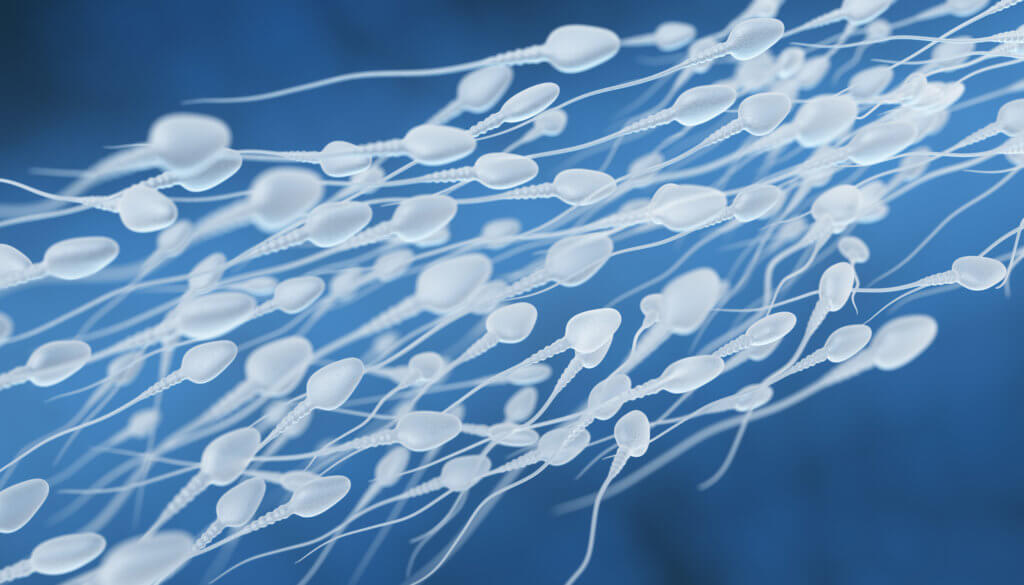GENEVA, Switzerland — Will constantly using a smartphone lead to male infertility? A new study is raising questions about the impact of mobile phone use on male reproductive health. Researchers from the University of Geneva (UNIGE) and the Swiss Tropical and Public Health Institute (Swiss TPH) found that frequent use of mobile phones displays a link to lower sperm concentration and total sperm count in young men.
However, the study did not establish a direct connection between mobile phone use and sperm motility and morphology.
Semen quality, a critical factor in male fertility, is evaluated based on parameters such as sperm concentration, total sperm count, sperm motility, and sperm morphology. According to the World Health Organization (WHO), a man with a sperm concentration below 15 million per milliliter is likely to take more than a year to conceive a child. Additionally, the chances of pregnancy decrease if the sperm concentration falls below 40 million per milliliter.

Over the past five decades, numerous studies have reported a decline in semen quality. The average sperm count has dropped from 99 million sperm per milliliter to 47 million per milliliter. Researchers attribute this trend to a combination of environmental factors, including endocrine disruptors, pesticides, and radiation, as well as lifestyle habits like diet, alcohol consumption, stress, and smoking.
UNIGE and Swiss TPH scientists investigated whether mobile phones also play a role in this decline. The study involved 2,886 Swiss men between 18 and 22, recruited between 2005 and 2018 at six military conscription centers. Participants completed detailed questionnaires about their lifestyle habits, general health, and mobile phone usage frequency, as well as where they typically stored their phones when not in use.
The findings revealed an association between frequent mobile phone use and lower sperm concentration. Men who used their phones more than 20 times a day had an average sperm concentration of 44.5 million per milliliter, compared to 56.5 million per milliliter in men who used their phones less than once a week. This marked a 21-percent decrease in sperm concentration among frequent users.
The study also noted that this association was more pronounced in the earlier study period (2005-2007) and gradually decreased with time (2008-2011 and 2012-2018). Researchers suggest that this trend may have a link to the transition from 2G to 3G and then to 4G mobile networks, which resulted in reduced transmitting power of phones.
‘‘Previous studies evaluating the relationship between the use of mobile phones and semen quality were performed on a relatively small number of individuals, rarely considering lifestyle information, and have been subject to selection bias, as they were recruited in fertility clinics. This has led to inconclusive results,’’ says study first author Rita Rahban, senior researcher and teaching assistant in the Department of Genetic Medicine and Development in the Faculty of Medicine at the UNIGE and at the Swiss Center for Applied Human Toxicology, in a university release.

The study also explored the positioning of mobile phones, such as carrying them in trouser pockets, but did not find a clear association with lower semen parameters. Researchers noted, though, that the number of participants who did not carry their phones close to their bodies was too small to draw robust conclusions on this specific aspect.
One limitation of the study was that it relied on self-reported data, which may not always accurately reflect actual mobile phone usage. To address this limitation, a new study funded by the Federal Office for the Environment (FOEN) is set to launch in 2023. It aims to directly measure exposure to electromagnetic waves and different types of mobile phone usage (calls, web browsing, sending messages) to assess their impact on male reproductive health and fertility potential. Participants will use a dedicated application on their mobile phones for data collection.
Researchers also intend to further investigate the mechanisms behind these observations, including whether the microwaves emitted by mobile phones have a direct or indirect effect, whether they cause a significant increase in testicular temperature, and whether they influence the hormonal regulation of sperm production.
The study is published in the journal Fertility & Sterility.
You might also be interested in:
- Best Men’s Multivitamins: Top 5 Brands Most Recommended By Experts
- Best Camera Phones In 2023: Top 5 Devices Most Recommended By Experts
- Cell phone radiation causing sharp spikes in Alzheimer’s cases, study suggests
- Saving male fertility: AI can identify healthy sperm in infertile men in seconds


Yawn. Another junk science study based on people filling out a survey. Completely ignoring the known environmental risks linked to hormonal imbalances caused by ubiquitous hormone mimics in the environment such as Per- and polyfluoroalkyl substances (PFAS), Phthalates, Polybrominated diphenyl ethers (PBDE), bisphenol A (BPA), Polychlorinated biphenyls (PCBs), Atrazine, Dioxins, Triclosan, and other Xenoestrogens